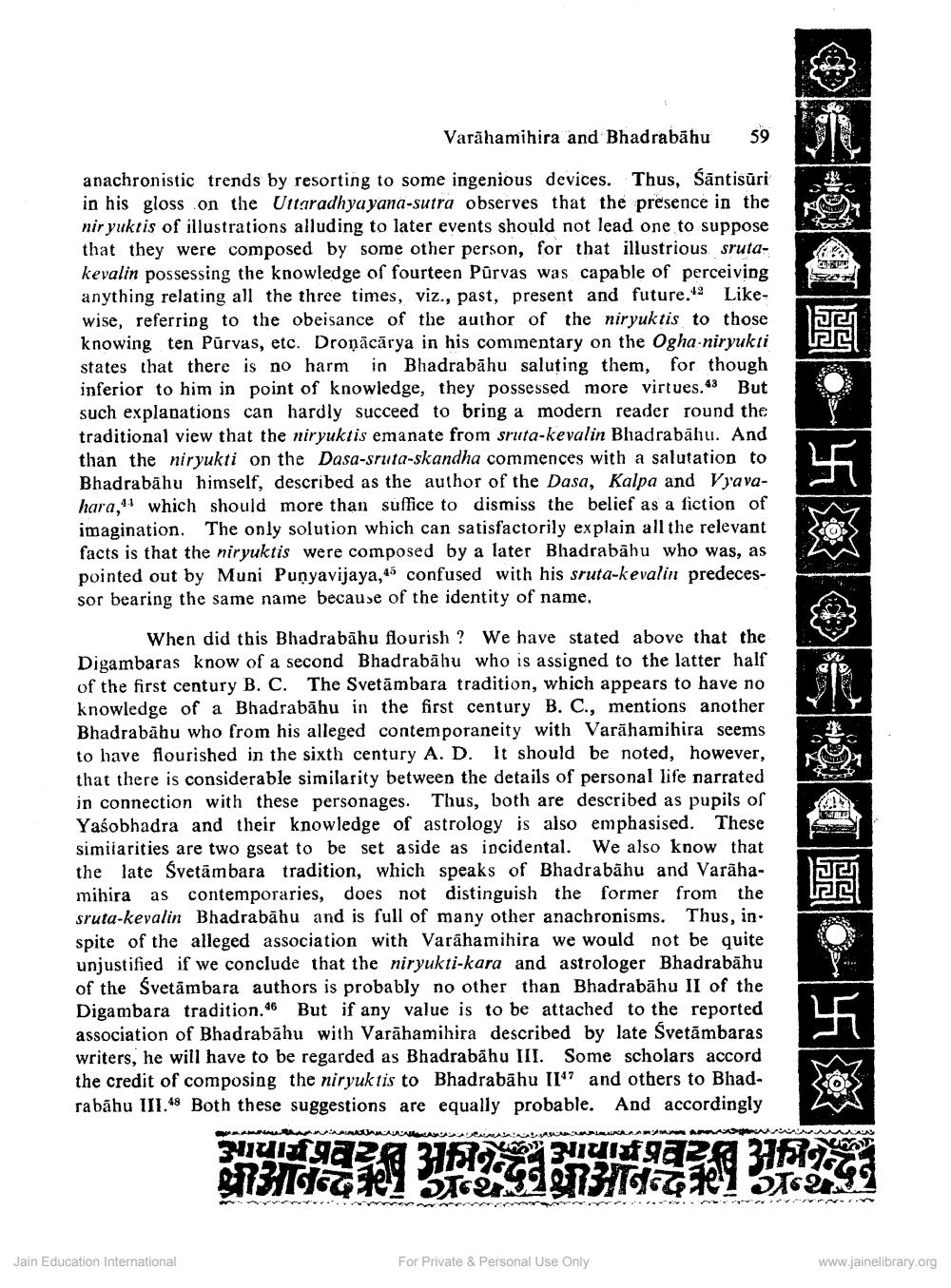Book Title: Varahamihira and Bhadrabahu Author(s): Ajay Mitra Shastri Publisher: Z_Anandrushi_Abhinandan_Granth_012013.pdf View full book textPage 8
________________ Varahamihira and Bhadrabāhu 59 FE anachronistic trends by resorting to some ingenious devices. Thus, śāntisūri in his gloss on the Uttaradhyayana-sutra observes that the presence in the nir yuktis of illustrations alluding to later events should not lead one to suppose that they were composed by some other person, for that illustrious srutakevalin possessing the knowledge of fourteen Purvas was capable of perceiving anything relating all the three times, viz., past, present and future.42 Likewise, referring to the obeisance of the author of the niryuktis to those knowing ten Pūrvas, etc. Dronācārya in his commentary on the Ogha-niryukti states that there is no harm in Bhadrabāhu saluting them, for though inferior to him in point of knowledge, they possessed more virtues. But such explanations can hardly succeed to bring a modern reader round the traditional view that the niryuktis emanate from sruta-kevalin Bhadrabahu. And than the niryukti on the Dasa-sruta-skandha commences with a salutation to Bhadrabāhu himself, described as the author of the Dasa, Kalpa and Vyavahara, 4 which should more than suffice to dismiss the belief as a fiction of imagination. The only solution which can satisfactorily explain all the relevant facts is that the niryuktis were composed by a later Bhadrabāhu who was, as pointed out by Muni Punyavijaya, 46 confused with his sruta-kevalin predecessor bearing the same name because of the identity of name. When did this Bhadrabahu flourish? We have stated above that the Digambaras know of a second Bhadrabahu who is assigned to the latter half of the first century B. C. The Svetāmbara tradition, which appears to have no knowledge of a Bhadrabāhu in the first century B. C., mentions another Bhadrabāhu who from his alleged contemporaneity with Varāhamihira seems to have flourished in the sixth century A. D. It should be noted, however, that there is considerable similarity between the details of personal life narrated in connection with these personages. Thus, both are described as pupils of Yaíobhadra and their knowledge of astrology is also emphasised. These similarities are two gseat to be set aside as incidental. We also know that the late Svetāmbara tradition, which speaks of Bhadrabāhu and Varāhamihira as contemporaries, does not distinguish the former from the sruta-kevalin Bhadrabāhu and is full of many other anachronisms. Thus, in. spite of the alleged association with Varahamihira we would not be quite unjustified if we conclude that the niryukti-kara and astrologer Bhadrabāhu of the Svetāmbara authors is probably no other than Bhadrabāhu II of the Digambara tradition. But if any value is to be attached to the reported association of Bhadrabāhu with Varāhamihira described by late Svetămbaras writers, he will have to be regarded as Bhadrabāhu III. Some scholars accord the credit of composing the niryuk tis to Bhadrabāhu II" and others to Bhad. rabāhu 111.48 Both these suggestions are equally probable. And accordingly WA MAHALAAN NAARYANA zuurgaz HAS Bing22637 915/10 R 511942903110129 556899 Jain Education International For Private & Personal Use Only www.jainelibrary.orgPage Navigation
1 ... 6 7 8 9 10 11 12 13 14 15 16 17 18 19 20
